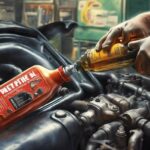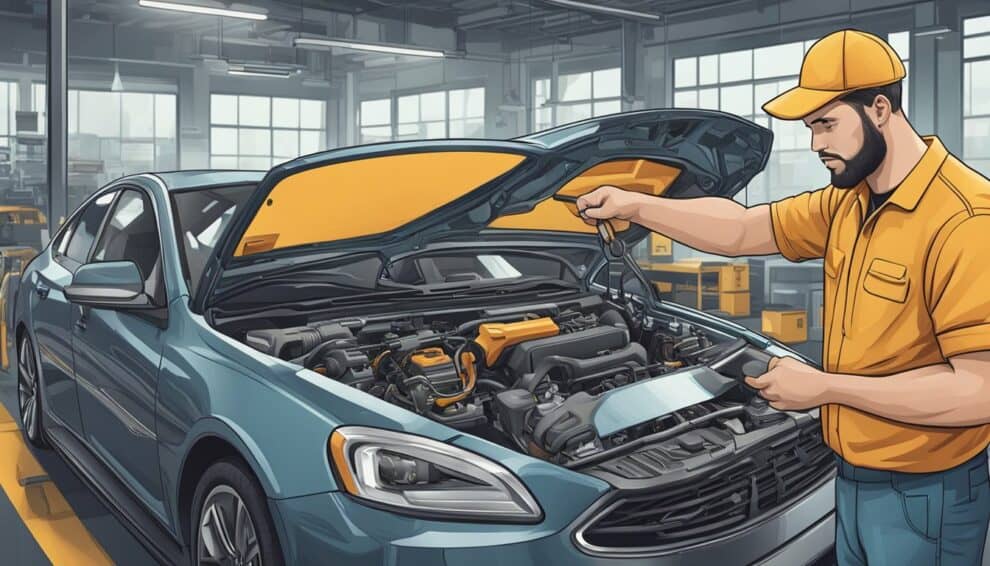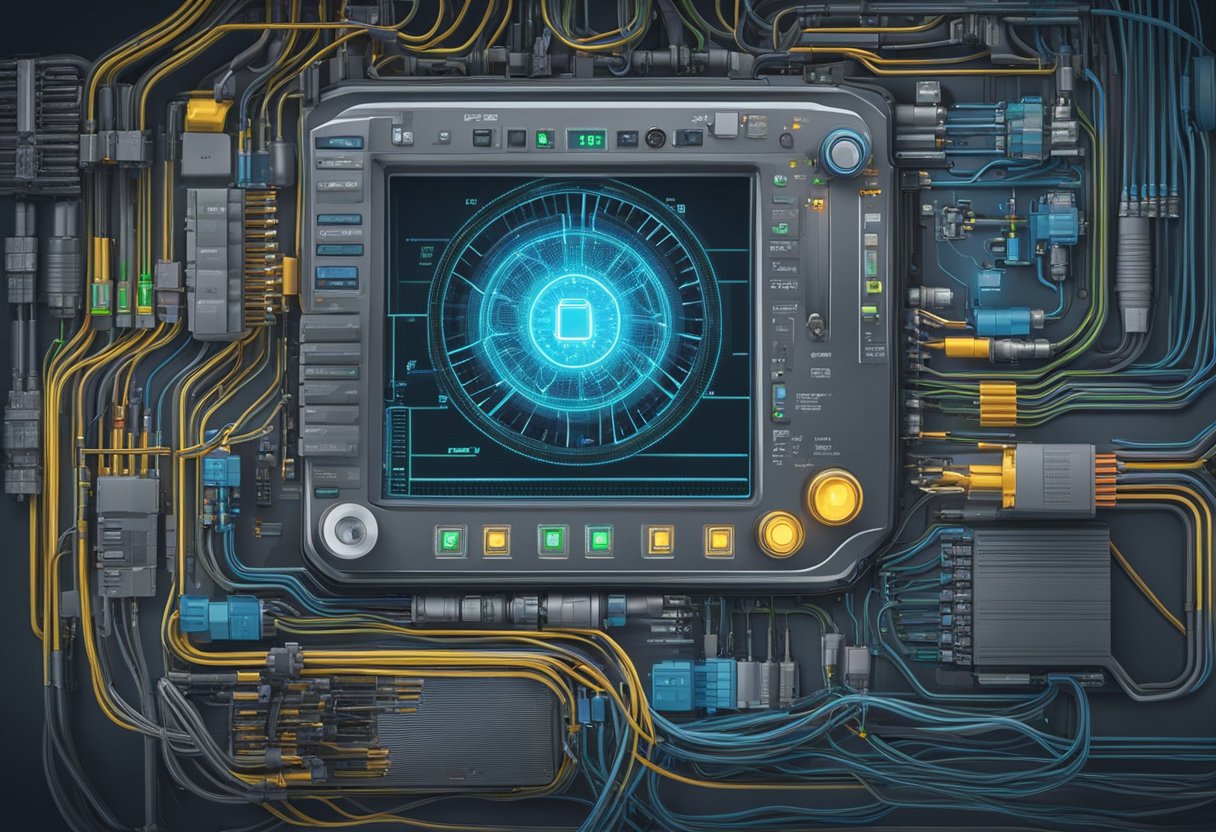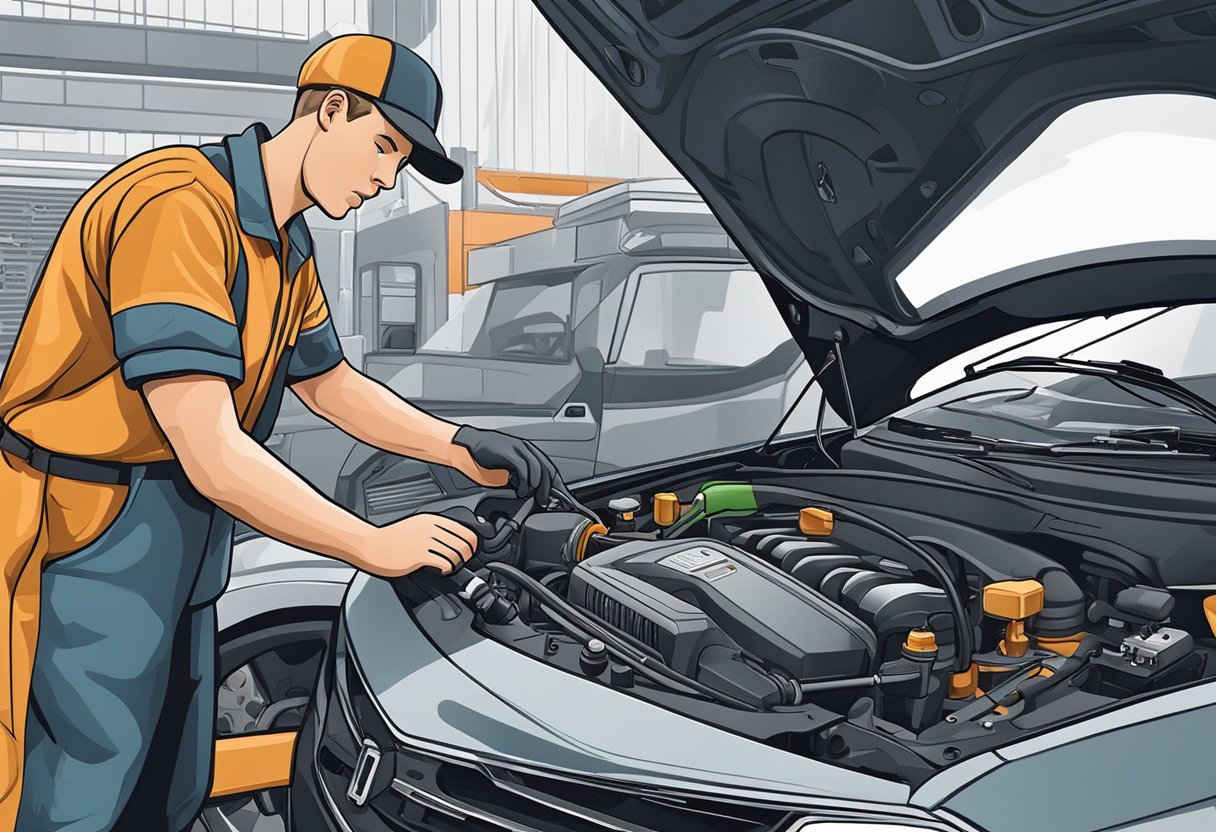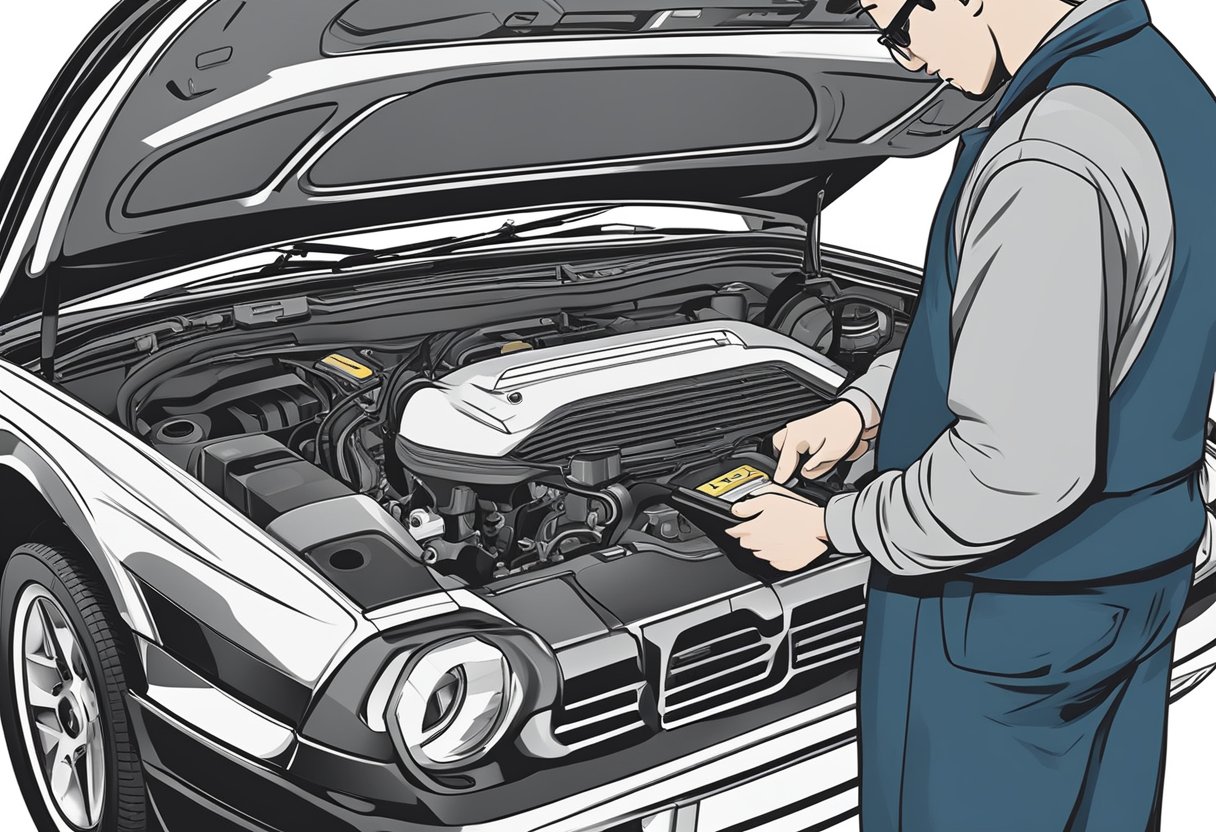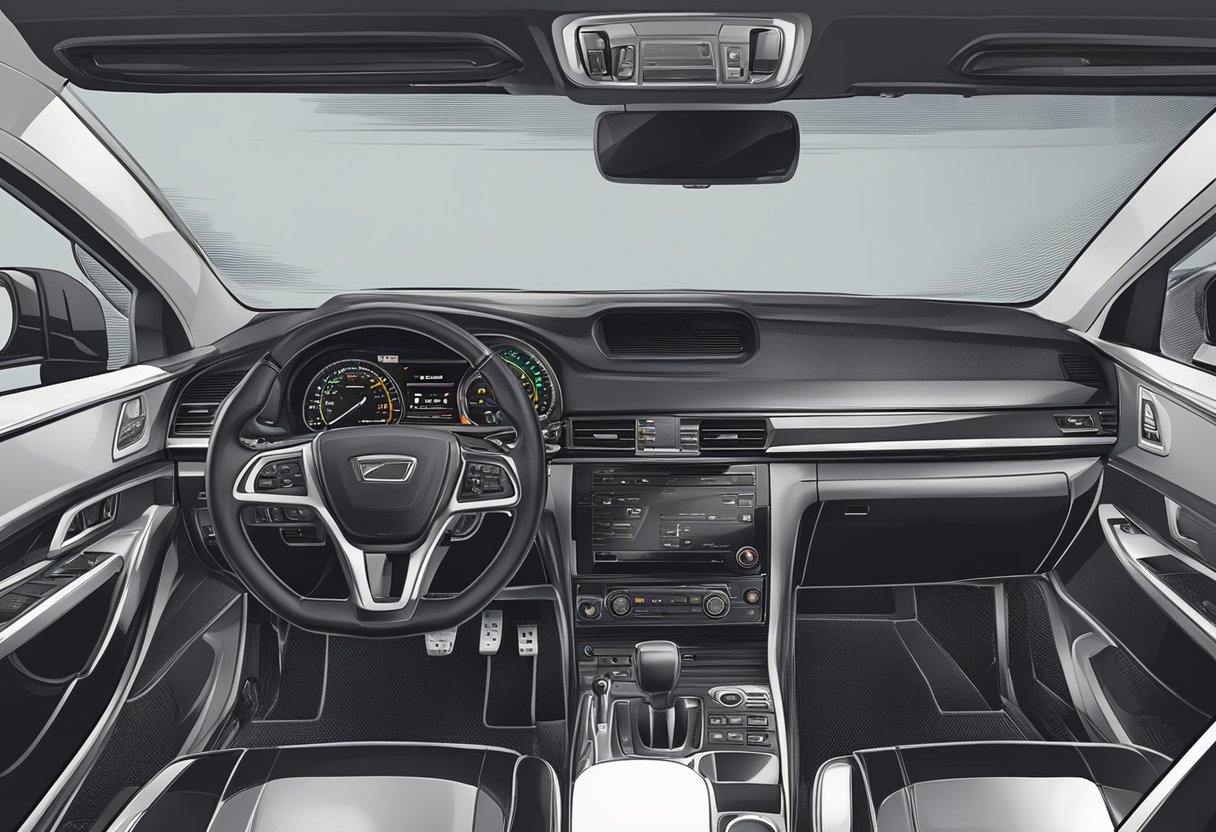If you own a modern car, you may have experienced the dreaded P2099 error code. This code indicates a problem with the post-catalyst fuel trim system, which can lead to a variety of issues, including decreased fuel efficiency and increased emissions. While this code can be frustrating to deal with, understanding its underlying causes and possible solutions can help you get your car back on the road and running smoothly.
One of the main causes of the P2099 code is a faulty oxygen sensor. This sensor is responsible for measuring the amount of oxygen in the exhaust gases, which helps the engine control system adjust the fuel mixture to achieve optimal performance. If the sensor is malfunctioning, it can cause the engine to run too rich or too lean, which can trigger the P2099 code. Other possible causes of this code include a clogged catalytic converter, a vacuum leak, or a malfunctioning fuel injector.
Understanding the P2099 Error Code
Definition and Significance
If you own a modern car, you might have come across the P2099 error code on your engine’s diagnostic system. This error code is related to the post-catalyst fuel trim system, and it indicates that the fuel mixture is too rich. A rich fuel mixture can cause a variety of engine problems, such as reduced fuel efficiency, increased emissions, and engine misfires.
The P2099 error code is significant because it can indicate a serious problem with your engine. If left unchecked, a rich fuel mixture can cause damage to your engine’s components, such as the catalytic converter, oxygen sensors, and spark plugs. Therefore, it’s important to diagnose and fix the problem as soon as possible.
Causes of P2099 Error
There are several possible causes of the P2099 error code. The most common causes include:
-
Faulty oxygen sensor: The oxygen sensor measures the amount of oxygen in the exhaust gas and sends this information to the engine control module (ECM). If the oxygen sensor is faulty, it can send incorrect information to the ECM, causing the fuel mixture to be too rich.
-
Dirty air filter: The air filter prevents dirt and debris from entering the engine. If the air filter is dirty, it can restrict the airflow to the engine, causing the fuel mixture to be too rich.
-
Malfunctioning fuel injectors: The fuel injectors spray fuel into the engine’s cylinders. If the fuel injectors are malfunctioning, they can spray too much fuel, causing the fuel mixture to be too rich.
-
Faulty fuel pressure regulator: The fuel pressure regulator controls the fuel pressure in the fuel system. If the fuel pressure regulator is faulty, it can cause the fuel pressure to be too high, causing the fuel mixture to be too rich.
In conclusion, the P2099 error code is a significant problem that can indicate a serious issue with your engine. It’s important to diagnose and fix the problem as soon as possible to prevent damage to your engine’s components and ensure optimal engine performance.
Troubleshooting the P2099 Error
Diagnostic Tools Required
Before you begin troubleshooting the P2099 error, you will need the following diagnostic tools:
- OBD-II scanner
- Digital multimeter
- Exhaust gas analyzer
Make sure your diagnostic tools are in good working condition before starting the diagnosis procedure.
Step-by-Step Diagnosis Procedure
Follow these steps to diagnose and troubleshoot the P2099 error:
-
Connect the OBD-II scanner to the vehicle’s diagnostic port and retrieve any stored codes. Look for any other codes besides P2099 that may be related to the issue.
-
Check the oxygen sensor readings using the OBD-II scanner. The readings should fluctuate between 0.1 and 0.9 volts. If the readings are stuck at a certain voltage, it may indicate a faulty oxygen sensor.
-
Check the wiring and connections of the oxygen sensor. Look for any damaged wires, loose connections, or corrosion. Repair or replace any damaged components.
-
Use a digital multimeter to test the resistance of the oxygen sensor heater circuit. The resistance should be between 4 and 6 ohms. If the resistance is outside this range, replace the oxygen sensor.
-
Use an exhaust gas analyzer to check the exhaust gases. Look for any signs of a rich or lean condition. A rich condition may indicate a faulty fuel injector or fuel pressure regulator, while a lean condition may indicate a vacuum leak or a faulty mass airflow sensor.
-
Check the fuel pressure using a fuel pressure gauge. The fuel pressure should be within the manufacturer’s specifications. If the fuel pressure is too low, it may indicate a faulty fuel pump or a clogged fuel filter.
By following these steps, you should be able to diagnose and troubleshoot the P2099 error in your modern engine. Remember to always use caution when working with diagnostic tools and consult a professional if you are unsure about any step of the process.
Common Solutions to Resolve the P2099 Error
If you are facing the P2099 error in your modern engine, you must take immediate action to avoid any further damage. Here are some common solutions that you can consider to resolve the P2099 error:
Repair and Replacement Options
One of the most effective ways to resolve the P2099 error is to repair or replace the faulty parts. The following table shows some common parts that may need repair or replacement:
| Faulty Part | Repair/Replacement |
|---|---|
| Oxygen Sensor | Replacement |
| Catalytic Converter | Replacement |
| Exhaust Leak | Repair |
| Engine Misfire | Repair |
It is important to note that repairing or replacing the faulty parts can be expensive, depending on the make and model of your vehicle. Therefore, it is recommended to consult with a professional mechanic to get an accurate estimate of the repair or replacement costs.
DIY Fixes vs. Professional Services
If you have some experience in car maintenance, you can try some DIY fixes to resolve the P2099 error. However, if you are not confident in your skills, it is recommended to seek professional services. Here are some pros and cons of DIY fixes and professional services:
DIY Fixes:
- Pros:
- Cost-effective
- You can learn new skills
- Cons:
- Risk of further damage
- Limited knowledge and experience
Professional Services:
- Pros:
- Experienced mechanics
- Guaranteed results
- Cons:
- Expensive
- Limited control over the repair process
In conclusion, resolving the P2099 error requires careful consideration of the repair and replacement options, as well as the choice between DIY fixes and professional services. It is recommended to weigh the pros and cons of each option and make an informed decision based on your budget, skills, and preferences.
What are the common causes of the P2099 error code in modern engines?
The P2099 error code in modern engines can be caused by powertrain malfunction symptoms solutions. Common culprits include oxygen sensor issues, vacuum leaks, and fuel system problems. To diagnose and fix the issue, it’s important to address the root cause and ensure proper maintenance of the vehicle’s powertrain components.
Preventative Measures and Maintenance Tips
To avoid encountering the P2099 error code in your modern engine, there are a few preventative measures and maintenance tips you can follow. These measures and tips will help keep your engine running smoothly and efficiently.
Routine Check-Ups
Regular check-ups are essential to ensure that your engine is in good condition. Here are some routine check-ups you should perform on your engine:
-
Check the air filter: A dirty air filter can cause your engine to run poorly and trigger the P2099 error code. Check your air filter regularly and replace it if it’s dirty.
-
Inspect the fuel system: A faulty fuel system can also cause the P2099 error code. Check your fuel system regularly and replace any worn-out parts.
-
Check the oxygen sensor: The oxygen sensor is responsible for measuring the amount of oxygen in the exhaust gases. A faulty oxygen sensor can cause the P2099 error code. Check your oxygen sensor regularly and replace it if it’s faulty.
Performance Optimization
Optimizing your engine’s performance can also help prevent the P2099 error code. Here are some performance optimization tips:
-
Use high-quality fuel: High-quality fuel can help improve your engine’s performance and reduce the risk of the P2099 error code.
-
Use synthetic oil: Synthetic oil can help reduce engine wear and improve performance. It can also help reduce the risk of the P2099 error code.
-
Use a performance chip: A performance chip can help optimize your engine’s performance and reduce the risk of the P2099 error code.
By following these preventative measures and maintenance tips, you can help prevent the P2099 error code from occurring in your modern engine.
Impact of the P2099 Error on Engine Performance
When the P2099 error code appears in modern engines, it can have a significant impact on engine performance. This error code indicates that the post-catalytic converter fuel trim system is running too lean, which means that the engine is not receiving enough fuel to operate efficiently.
One of the most noticeable effects of the P2099 error code is reduced engine power. This is because the engine is not receiving enough fuel to produce the power required for optimal performance. As a result, you may experience a decrease in acceleration, slower top speeds, and overall reduced performance.
In addition to reduced power, the P2099 error code can also cause the engine to run rough or stall. This is because the engine is not receiving the proper fuel-to-air ratio, which can cause the engine to misfire or even shut down completely.
To prevent further damage to the engine, it is important to address the P2099 error code as soon as possible. This may require a diagnostic test to determine the root cause of the error code, such as a faulty oxygen sensor or a clogged fuel injector. Once the issue has been identified, repairs can be made to restore the engine’s performance and efficiency.
As an Amazon Associate we earn from qualifying purchases.


